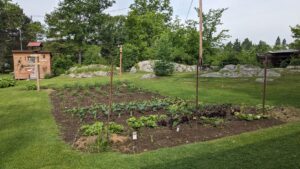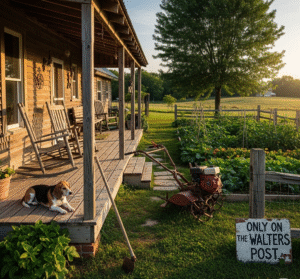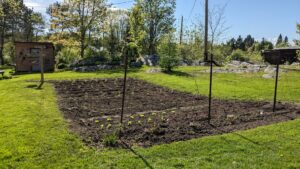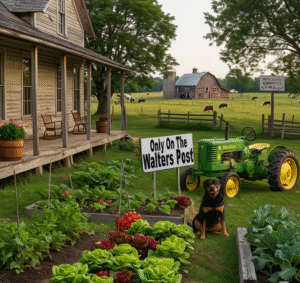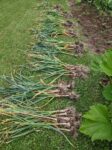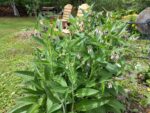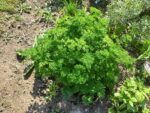Click on Image to Enlarge
Good Morning! Another Day, Another Quiet Start Here in the Pines
So far this morning things are looking not all that bad outside, but in saying that here is the weather forecast for today tonight and tomorrow.
Today (June 21): High of 77 °F (25 °C), low around 67 °F (19 °C). Expect cloudy skies with showers and thunderstorms, especially in the morning when it’ll feel warm and humid, shifting to breezy later with possible heavy downpours and strong winds.
Tonight: Temperatures should hold steady near 67 °F (19 °C) as the storms wind down.
Tomorrow (June 22): It’s forecast to warm up further, reaching 88 °F (31 °C); lows around 68 °F (20 °C). Expect morning clouds to give way to sunshine, though afternoon thunderstorms are possible in certain areas.
So might pay to have a raincoat handy for today.
Highway 522 did pick up a wee bit yesterday traffic-wise, but here again, it’s mostly the locals that are moving around.
You know how it goes in small towns… half the traffic is folks waving at the other half. And if someone’s brake lights come on, it’s probably just them stopping to chat out the window.
Bug Report:
Not too much to report in that department, other than a few mosquitoes irritating folks. The wet, damp weather’s brought them out, and if it turns warm and muggy, well, they’ll be out in full force.
On another note, yesterday morning I spent some time out in the gardens. Had a bit of thinning to do, as things are really coming on strong now. It’s that time of year when everything seems to grow while your back’s turned.
While out there, I noticed our peonies are in full bloom, and let me tell you, they smell just like those old-time heritage roses. That old saying bet you can’t take one sniff is sure true. My wife and I sure enjoy them. The yellow lilies out by our sign are also putting on a good show this year too, and a few more by the fishpond are just starting to strut their stuff. The white lilac is about done for the season, but while it lasted, you could smell it all over the property, sweet and strong, just the way we like it.
The good news, is the grass has started to slow down a bit now, which makes things a little easier for the two of us. Easier on us and the mowers, too.
I have to say, our place is something special. The way we’ve fixed it up over the years, there’s always something new to catch your eye, a bloom here, a bird house there, or just the way the light hits things in the morning. My wife and I love this property more than words can say. It’s peaceful, it’s full of life, and most of all, it’s home. For now anyway.
So what are you up to today, GW?
Well, today, with my shop being a touch messy again, I’m planning on straightening things up in there. And if the rain holds off, I’ve got some weeds to deal with in our vegetable garden. I like to stay on top of them as they are easy to manage now, but if you let ’em get ahead of you, you’re in for a whole lot more work.
But first, I’ll need to sharpen up my old hoe a bit. It’s gotten a bit dull with all the use it’s had so far this year. A sharp hoe makes the job a whole lot easier, let me tell ya.
On top of that, we’ve still got folks dropping by for our garage sale and a few wandering into our little gift shop too, so that will also keep us hopping.
And I’ll tell you… my little woman’s got her hands full today as well. She’s been cleaning the house, making meals, working on some sign orders she’s got to get done, and keeping everything running smooth around here. Truth be told, it’s wash day too, and that alone is a full day’s work. That woman never stops, I don’t know how she does it sometimes.
So, all in all, between the two of us, I’d say the day’s spoken for.
So with that, I’m off for the breakfast my lovely wife has made for me. After that, I think a cup of hot cocoa on the front porch will be in order. Now that those pesky black flies have finally left us for another year, it’s a touch more comfortable out there.
“Until the next time: Keep Your Minds Open & Your Stories Alive.” GW

